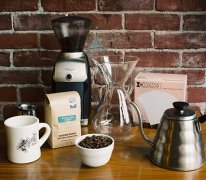Relationship between shading planting of Coffee trees and Fine Coffee

As a knowledgeable coffee consumer, you must have heard the description that this coffee is grown in shade. However, such a word that often appears in your coffee dictionary can sometimes be quite deceptive. Fair-trade, organic, hand-picked, specially roasted coffee is often considered better, isn't it? Maybe--depending on how you define "quality." So, must shady coffee taste good? Let's start from the beginning.
First, there is a reason why shade planting is an advantage. Biodiversity provides favorable conditions for coffee to grow when grown in shade from other vegetation. Native plants that provide shade for coffee range from forest plants such as cedar to fruit trees such as banana, orange juice, lemon, avocado, and lychee trees, all of which work together to create a nutritionally balanced soil environment and provide a specific, stable microclimate for coffee growth. Similarly, animals such as insects and birds also benefit from the diversity of the environment brought by many plants, so that more animals live here, which in turn benefits the pollination of plants in the environment. Finally, careful planting practices also contribute to soil health, thereby reducing soil erosion in the planted areas.
But what about coffee that wasn't grown in shade? Many of the world's top coffees, grown at high altitudes, are produced with less "proper" treatment and no other trees to shade them. Thus we can see that in the world coffee industry, coffees that score high in the standard rating mechanism and are used as models may come from ecologically diverse, shaded areas or from high-altitude mountainous areas exposed to "full sun" for long periods of time.
Despite the conflicting views on the effect of shade on coffee taste, at least the current view is that shade cultivation is undoubtedly a beneficial factor for the environment, but this is only one of many conditions affecting the growth of coffee trees and thus coffee flavor.
"Health and quality go hand in hand," says Byron Holcomb, a coffee farmer from Brazil who deliberately grows coffee in full sun."Healthy coffee is more likely to be of excellent quality. Botanically speaking, coffee is an undergrowth that naturally needs to grow under taller trees, and such trees are what coffee calls shade vegetation."
However, the conditions that provide a healthy environment for coffee to grow and benefit the soil hardly have a big impact on the cup of coffee you end up drinking. Shawn Steiman of the University of Hawaii at Manoa, whose research focused on the effects of agroforestry conditions on coffee yield and quality, said that although the amount of sunlight a coffee tree receives affects its flavor, it does not predict coffee flavor at all.
"Coffee flavor is influenced by a lot of factors," Steiman said."If you use the term 'terroir,' it's an interaction between ecological conditions, precipitation conditions, temperature, etc. -obviously, plant growth is closely related to all of them. Therefore, the influence of sunlight plays only a part in 'terroir conditions', but must not be considered as the only factor." He added.
Holcomb points out that there are coffees that are admired around the world that are not grown in shade, and Kenya's coffee is a good example. "Shade promotes coffee growth because it gives coffee a natural environment that is closer to its nature, and thus, I think, genetically promotes certain characteristics of coffee that are reflected in the cup as good taste," Holcomb said. All other things being equal, shade probably has little effect on coffee quality, whereas we know that the amazing Kenyan coffee is grown at high altitudes without shade."
For shade cultivation, the more realistic sustainability question is: are strategies that space out other vegetation for shade conditions, thereby reducing coffee planting density and resulting in less yield, economically a realistic option for coffee farmers? Especially since there is no clear evidence that coffee grown in shade tastes better.
But it's more likely that consumers themselves are the ones who really matter, especially the same feeling we have when we drink shade-grown coffee that we have when we buy biodiverse, permanently grown, environmentally friendly coffee--the feeling that our own opinions are recognized. That said, associating "better" coffee with shade cultivation is a more romantic view than a more scientific one.
Important Notice :
前街咖啡 FrontStreet Coffee has moved to new addredd:
FrontStreet Coffee Address: 315,Donghua East Road,GuangZhou
Tel:020 38364473
- Prev

The charm of Chongqing's pure Japanese coffee.
People who make coffee are in a different mood, and each cup of coffee brewed in proportion will taste different. At the Mora Cafe in the Wealth Center, Guo Lingfeng, a 27-year-old returnee, talks about coffee and looks very expert. He is only 27 years old, but he has been working for coffee for 10 years. Three years ago, many coffee fans found that on the first floor of Xingguang 68, there was a small coffee shop with a small area.
- Next

The utensils used in making Japanese-style hand-brewed coffee
Japanese-style hand-brewed coffee seems simple, but in fact, a little carelessness in each step will lead to different tastes of coffee or subtle changes. there are a few points that need to master the basic principles of making Japanese-style hand-brewed coffee and some variables when making Japanese-style hand-made coffee. The following are some points that I have summed up after communicating with many well-known coffee teachers in Chongqing.
Related
- Beginners will see the "Coffee pull flower" guide!
- What is the difference between ice blog purified milk and ordinary milk coffee?
- Why is the Philippines the largest producer of crops in Liberia?
- For coffee extraction, should the fine powder be retained?
- How does extracted espresso fill pressed powder? How much strength does it take to press the powder?
- How to make jasmine cold extract coffee? Is the jasmine + latte good?
- Will this little toy really make the coffee taste better? How does Lily Drip affect coffee extraction?
- Will the action of slapping the filter cup also affect coffee extraction?
- What's the difference between powder-to-water ratio and powder-to-liquid ratio?
- What is the Ethiopian local species? What does it have to do with Heirloom native species?

